The Renaissance period was characterized by Italian thinkers, painters, architectures, sculptors, and poets who defined their way of living through art. One of such influential men of the time was Michelangelo Buonarroti. He was a painter, sculptor, and architect considered one of the greatest artists of all time.
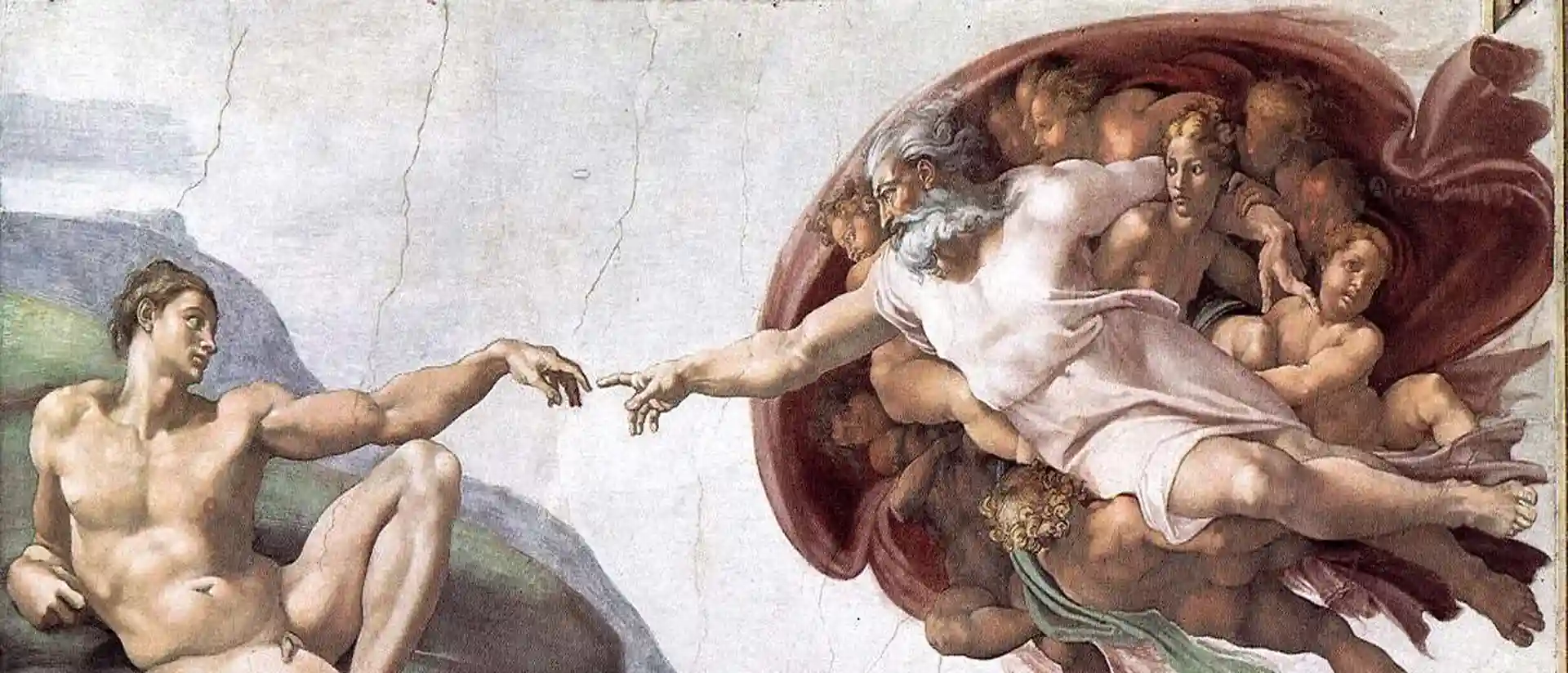
The Pope gave Michelangelo some of the great’s sculpture and painting works famous to date. Michelangelo is widely known due to some of his work that stands, such as the David sculptures, his Pieta, and the painting at the Sistine Chapel, which has been studied even by the current generation. Michelangelo Buonarroti was a genius of his time and combined his talent with seer hard work to pull off some of the most noticeable yet expensive work of the 16th century.
Although he is famously known for his painting at the Sistine Chapel of the catholic church in Rome, Michelangelo regarded himself as a sculptor. While most of his contemporaries based their art on paintings, Michelangelo worked on marble sculpture most of the time, spending a few times painting. The Sistine ceiling painting had received great attention from paint lovers in the centuries because of its beauty and details.
His career life is fully documented than most of his associates and artist of the time, making him more famous. He had two biographies documented and published while he is alive.
The first biography highlighted the final chapters of the artist covering 1550, written by Giorgio Vasari, a painter, and an architect. He explicitly presented Michelangelo’s works describing them as the perfection of art that surpassed the works of his predecessors.
This biography though detailed and in awe of the artist, Michelangelo was not impressed by it, thus ordering his assistant Ascanio Condivi to pen down a second biography. The second biography under the direction of Michelangelo Buonarroti covered his speech and is regarded by many scholars due to its authority.
Nevertheless, Vasari’s lively writings and the book’s reprinting into several languages has made the biography popular concerning Renaissance artists.
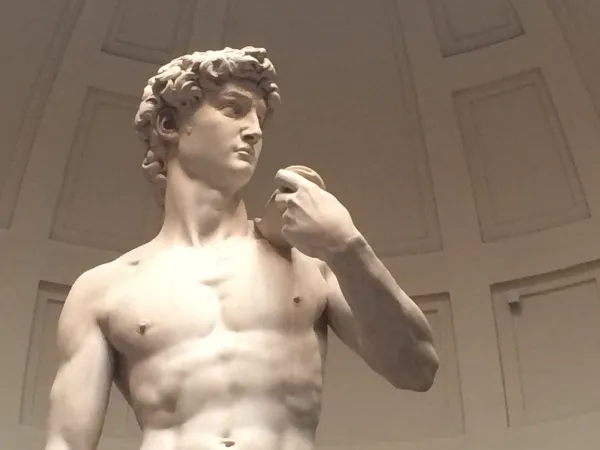
Due to Michelangelo’s fame, countless of his mementos such as poems, letters, and sketches have been preserved more than any Renaissance man. The man’s understanding was unrivaled, and his fame continues to grow in the art community to this day.
Early Life and Training of Michelangelo Buonarroti
Michelangelo di Lodovico Buonarroti Simoni was born to a family in Florentine on March 6, 1475. His family came from a generation of minor nobles in the town; however, the family had lost its prestige and wealth at the time of his birth, with his father working occasional government jobs.
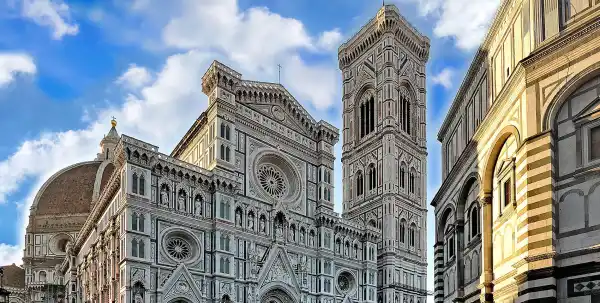
A few months after Michelangelo’s birth, the family moved to Florence to permanently reside there. To be an artist was looked down upon during this time, and through a struggle with his father, Michelangelo became an apprentice at the age of 13. He joined Domenico Ghirlandaio, the city’s most renowned painter, for three years, but left a year later, reasoning he had nothing left to learn from the man.
His talent was noticed by one of the leading art patrons Lorenzo de Medici, a Florence citizen. Lorenzo Medici enjoyed the company of the city’s most poetic, literate, and talented individuals.
He invites Michelangelo to his residence, offering him an opportunity to stay in one of the rooms in his palatial home.
Surrounded by intellectuals in the Lorenzo circle, Michelangelo Buonarroti acquired knowledge in politics and philosophy that would later influence most of his art. At the Medici’s home, he honed his skill in sculpturing under Bertoldo di Giovanni – the man charged with preserving Lorenzo’s collection of Roman sculptures. Giovanni was also a sculptor and taught Michelangelo many techniques in the field. This influence contributed greatly to his success, so he always referred to himself as a sculptor. Unlike Giovanni, who sculpted in bronze, Michelangelo specialized in marble sculptures making him stand out among his teachers.
Early works and fame – Bacchus
Although Florence was regarded as the center of art in the Roman empire, because Europe’s best sculptors and painters hailed from there, the city had diminished in its ability to offer large commissions for artworks as before.
Several Florentine-born artists like Leonardo da Vinci and his teacher Andrea del Verrocchio had left Florence for better pay in other cities. Political turmoil in the region led to the fall of the Medici empire and was unable to support art as it used.
Michelangelo Buonarroti also left Florence for Bologna, where he was committed to succeeding a deceased sculptor working on the tomb and the shrine of St. Dominic. In this project, he produced three marble sculptures that deviated from his predecessor’s fanciful agility, depicting seriousness on his sculptures.
The seriousness of his artwork is also seen in his choice of marble as a material for sculpture. He would deviate from the seriousness and modify depending on the prevailing factors such as inspiration from other stimulating artists and specific work functions.
Such deviation is evident in Michelangelo’s first surviving marble work- the Bacchus, which he created upon a brief return to his hometown in Florence. The Bacchus followed the model by ancient Roman sculptors that made nude figures.
This work is unique among Michelangelo’s artistry as it is considered to evoke the god of wine by its conscious instability. It could be observed from all angles rather than a primary front look which was the main feature of many works. Bacchus shows the Roman god of wine suspended on a rock in a state of drunkenness. One of Michelangelo’s earliest achievements, commissioned by Cardinal Riario, sparked controversy during its installation. On seeing the final pie, the cardinal considered it inappropriate and rejected it, prompting Michelangelo to sell the sculpture to Jacopo Galli, his banker.
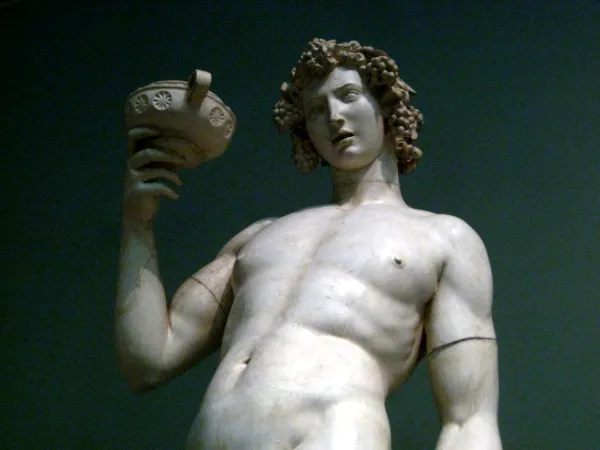
Despite its purported inappropriateness, the piece showed Michelangelo’s talent. His excellent understanding of the human anatomy is evident in the sculpture figure body, which Vasari writes in Michelangelo’s biography as the slenderness of a young man and the roundness of a woman.
The Pieta
The Bacchus sculpture made him famous and, as a result, received a commission from a visiting French cardinal Jean Bilhers de Lagraulas, who was sent as King Charles VIII's envoy to the Pope.
The cardinal wanted a statue of the draped Virgin Mary carrying her dead son in her hands – a Pieta– in his future tomb.
Michelangelo carved this image from one marble block featuring two figures of the mother and son. Some 500 years after its completion, this 69-inch-tall masterwork continues to attract legions of tourists and visitors to St. Peter’s Basilica.
They transferred the image to the church, and its depiction of lamentation upon Christ’s death is meant to move observers to repentance by praying for the forgiveness of sins for which Christ died.
The challenge with the project was curving the two features from one block of marble.
Michelangelo considered the component as one dense and compact mass as he did in earlier works. His intention was bringing out the contrast in this image with clarity, showing male and female, clothed and naked, vertical and horizontal, dead and alive.
Pieta by Michelangelo differed from the painting portrayal of a suffering virgin Mary. Michelangelo depicted the Virgin as having a deep sense of maternal tenderness for her dead son. In this sculpture, rather than depict Christ as dead, he looks like he is sleeping in the arms of her mother.
The mother looks at her sleeping son, waiting for her to wake up as a symbol of resurrection. The draped clothing of Mary in the base of the sculpture further gives credence to the artist’s mastery of the marble movement.
Michelangelo signed off this sculpture to refute the rumor that the work was from one of the competitors. The image captures you with awe at the magnitude of ingenuity involved in the work. This work is Michelangelo’s most revered piece of art by past and present scholars alike.
Michelangelo Buonarroti Madonnas
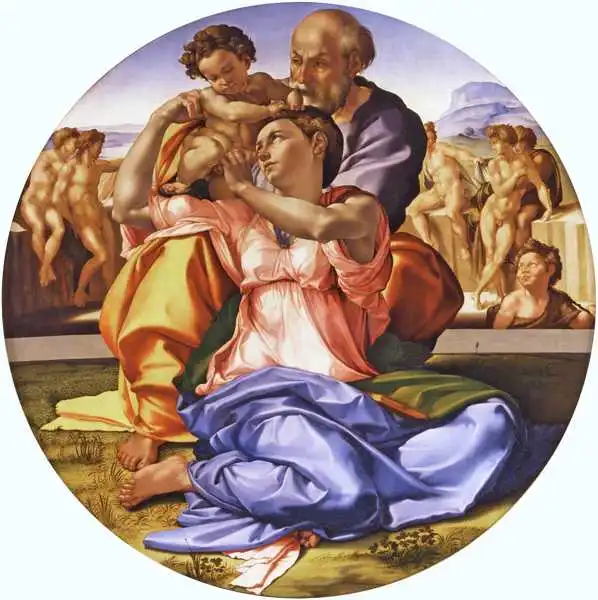
The creation of madonnas was a common thing among artists at the time. While his work entitled Madonna and the Child is static and blocky, his other works, such as Holy family and the Madonna and the Child with Infant St. John, are moving through their features.
His painting works demonstrate the artist’s fascination with Leonardo’s works. Though Michelangelo has often denied that some artists inspired him, Leonardo’s return to Florence in the 1500s after being away for 20 years was exciting to the young artist there.
Scholars agree that Michelangelo was among these talented youngsters. Leonardo da Vinci’s works had a powerful and influential impact on Michelangelo’s works as he blended Leonardo’s style of momentary processes with his style of weight and strength. The resulting works from these combinations showed massive bodies in forceful action, and these are the most admired major works of Michelangelo.
Holy family painting, probably commissioned by Agnolo and Maddalena Doni at the birth of their firstborn, was one of the most innovative paintings of Michelangelo as it would later influence the development of Florentine early Mannerism.
The painting has a cold and brilliant color composition scheme that shows the sculptural intensity and creates expressive and dynamic effects. The graphic of this painting is legendary in that it has caused endless debates among scholars and influenced many works today.
The Value of the Sistine Chapel Ceiling - Michelangelo Buonarroti Masterpiece
In 1505, Michelangelo was commissioned by Pope Julius II to sculpt a tomb having 40 grand statues. The artist began the work in earnest; however, the Pope shifted his priorities as he got entangled in a military dispute and family politics that made him scare his funds. He could no longer fund the grand project, and the embittered Michelangelo left Rome though he would occasionally work on the project, leaving it for his pupils to complete the job.
Nevertheless, the Pope called him back to Rome with a less expensive project to compensate for the tomb project. The Pope wanted a drawing of the twelve apostles of Christ at the ceiling of the Sistine Chapel. The chapel walls had been painted by some of the greatest artists of the Renaissance era, but Michelangelo was about to outshine all of them with his skills and techniques in painting.
He produced what many terms as the defining work of Western art of any century. Michelangelo depicted in the multi-paneled ceiling the story of Genesis – from creation, human fall, Noah’s life to the Great floods in Noah’s day. The Pope commissioned the painting of the 12 apostles and the filling of the remaining parts with architectural motifs. The artist had another plan; he wanted to do something more ambitious by covering the entire ceiling of 800 square meters with paintings
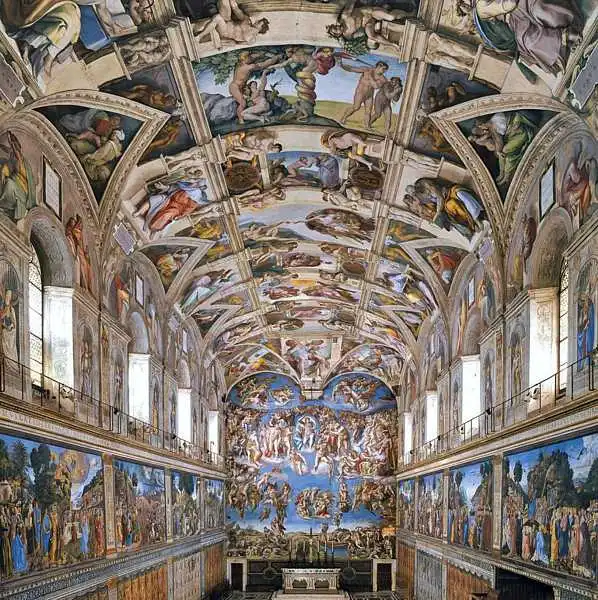
Michelangelo Buonarroti worked on the project in secrecy for four years, which was considerably faster considering the magnitude of the work. The techniques he used for painting showed his creativity and have influenced painting models to date. For instance, he used a contrasting technique in which he painted contrasting colors next to each other. This technique made the bright colors stand out without needing brighter or darker shades.
He also employed the use of fresco technique which involves washing of paint to wet the plaster. He would scrape off some of the wet surfaces before painting to help create an illusion. These paintings were full of biblical lessons and messages for application and taught the redemption of men from sin, a prominent church teaching.
Architectural works and Poems
Although Michelangelo is famous for his influential and productive sculptures and painting of the Italian Renaissance, he also composed hundreds of madrigals, sonnets, and poems throughout his illustrious career.
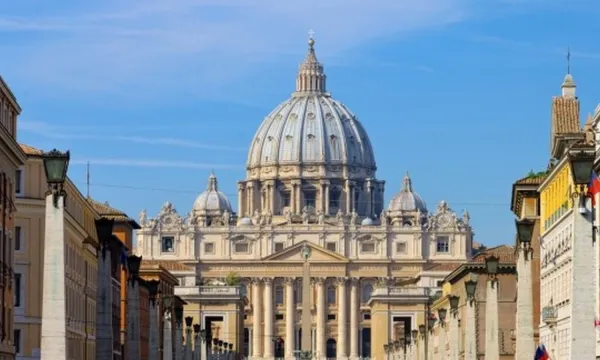
The verses in his composition range from grand and universal themes such as time and death, love and longing, salvation, and art.
He also got inspiration from personal things, physical tribulations like old age, and gratitude. He wrote poems incorporating the philosophy of Neo-Platonism in which he argues that a human soul that is full of love and happiness can reunite with the creator. Some of the ideas he wrote about are greatly influenced by the discussions and debates he had with bright minds during his stay at the Medici house.
While away from Rome, he wrote several lyrical letters to his family and friend back in Rome. His letters to a certain young nobleman called Tommaso Cavalieri are so intense that there has been a debate about whether it was the same-sex longing or a father-son relationship.
Towards the end of his life, he focused on architectural projects working on the interior designs of the Medici chapel in Florence. He introduced starling variations to the classical forms in this building in addition to wall designs and windows. He also designed the famous dome of St. Peter’s Basilica in Rome, though the structure was later completed after Michelangelo’s death. Among his illustrious masterpieces of architecture include the last Judgement, Moses sculpture, and the sculpture on Night Dawn and Dusk completed in 1533.
Michelangelo Buonarroti: last days
During his early years, he studied Roman and classical Greek sculptures and a study in cadavers which made him an expert in human anatomy. This knowledge made him produce several arts of the centuries. Michelangelo’s skills to curve a complex dual sculpture from a single block of marble-like in the case of the Pieta is unparalleled to date. Some regard him as one who could invoke real life from a non-living stone.
His controversial life is of interest, known for his explosive personality and aggressiveness, with several of his works left midway and incomplete. He was known to be proud and rebellious, defying conventionality in how he treated his enemies to pass a message through painting.
His painting at the Sistine Chapel placed him above his predecessors in defining art. He is also known for his iconic sculptures, such as the 17-foot-tall male perfection of David, the Pieta, and the dome design of St. Peter’s Basilica.
Michelangelo died in 1564 at the age of 88 following a short illness. He probably lived longer than most of the people in his era. A Pieta for his tomb that he had begun curving remains unfinished and is today displayed at the Museo dell Opera del Duomo in Florence.
The 5 reasons why Michelangelo Buonarroti is so important
1 - The Human Spirit Incarnate
What resonates so profoundly about Michelangelo is not just his technical virtuosity, but his profound understanding of the human spirit. His sculptures, particularly, seem to breathe with life and evoke deep emotion. He transformed cold stones into vessels of passion and pathos, vessels that convey narratives of suffering, redemption, and the enduring struggle of life itself.
Take the 'David,' for instance. Towering at over 17 feet, the marble masterpiece captures the essence of inner strength and fortitude of a young hero facing an almost certain fate. This piece, more than any other, illustrates Michelangelo's ability to reveal the inner world through the eloquent language of the body.
And 'The Pietà,' the hauntingly beautiful image of Mary cradling the lifeless body of Christ, remains a poignant meditation on love and loss, a subject universally grasped but rarely so exquisitely expressed.
2 - Inspiration for Eternity
Curiously, Michelangelo often considered his sculptures as "finding" the figures already present within the stone, suggesting a belief in the eternal nature of his subjects. In a way, he believed he was freeing spirits from their earthly confines. His art, therefore, carries a dual significance - as a reflection of his contemporary world, and a bridge to the eternal.
Michelangelo's artistry challenges us to look beyond the physical and into the metaphysical, asking us to contemplate our place in a cosmos that is both exquisitely beautiful and unfathomably vast. His work is a constant reminder that we are part of a larger narrative, one that transcends time and requires us to aspire to our highest potential.
3 - The Persistent Pursuit of Excellence
Though Michelangelo's art seems to us today as the product of a single, uninterrupted roar of creativity, his biographies reveal a man beset by melancholy and self-doubt. His persistent pursuit of perfection led him to aggressively protect his work from the meddling hands of patrons, at times coming into conflict that cost him dearly. Yet, through it all, he continued to create, his genius fortified by an indomitable spirit.
In the narrative of Michelangelo's life, we discover an enduring lesson - that creative excellence is as much a product of resilience as it is of originality. It is an unyielding commitment to craft, an unquenchable thirst for knowledge, and the willingness to confront adversity that chart the path to transcendent work.
4 - A Cultural Touchstone
Michelangelo's influence extends beyond the world of art. His architectural designs, such as the dome of St. Peter's Basilica, stand as marvels of engineering and aesthetics. His literary efforts, documented in his copious surviving correspondences, reveal a mind keenly attuned to rhetoric and high thought. In every sphere he touched, Michelangelo left an indelible mark.
For contemporary audiences, Michelangelo is a cultural touchstone, an entry point into the rich tapestry of history and human achievement. His work, often reproduced and reinterpreted, continues to inspire new generations of artists and thinkers, each finding within his legacy some resonance with their own experiences and aspirations.
5 - The Weight of Legacy
To speak of Michelangelo is also to confront the question of legacy. His reputation as the quintessential 'Renaissance Man' - a polymath as well as a peerless painter and sculptor - sets an intimidating standard for subsequent generations. Yet, Michelangelo's life reminds us that legacy is not static; it is a dialogue between the past and present, an open-ended question that each generation must answer through its own creative acts.
This interplay between the weight of tradition and the call of innovation is a dynamic tension that continues to animate the cultural landscape. In our own pursuits, whatever they may be, Michelangelo beckons us to measure ourselves not against his achievements, but against the unyielding standard of aspiration and legacy he has set.

Conclusion
Michelangelo Buonarroti is considered a polymath genius and the greatest artist of the Italian Renaissance period. He rose in the period of the high Renaissance, which put intellect and reasoning above all else. Michelangelo and his contemporaries aided in the revival of Roman art and the classical Greeks by mimicking these early arts.
However, he went beyond mimicry of Greek and Roman art to produce his work which is a fusion of emotional realism and psychological intensity. Despite his rebellious nature, he found great support from several renowned patrons to provide some of the considered iconic masterpieces.
His works have been revered the world over, with some of them attracting visitors and tourists worldwide. Michelangelo is at the center of the Italian Renaissance he embodied what this era stood for during his life. He is known for his ambition, character, and talent which is clear in his famous work. Any art lover and historian will be interested in the life of this legend. Michelangelo continues to live in his sculptures, architectural works, paintings, and poems in the minds and hearts of antic lovers.
If you want to add your personal piece of Italian Renaissance to your home, look for breathtaking Fine Art Photographs at Paolo Modena Photography
Editor's note: this post was originally published in February 2023 and has been completely revamped and updated for accuracy and comprehensiveness.

